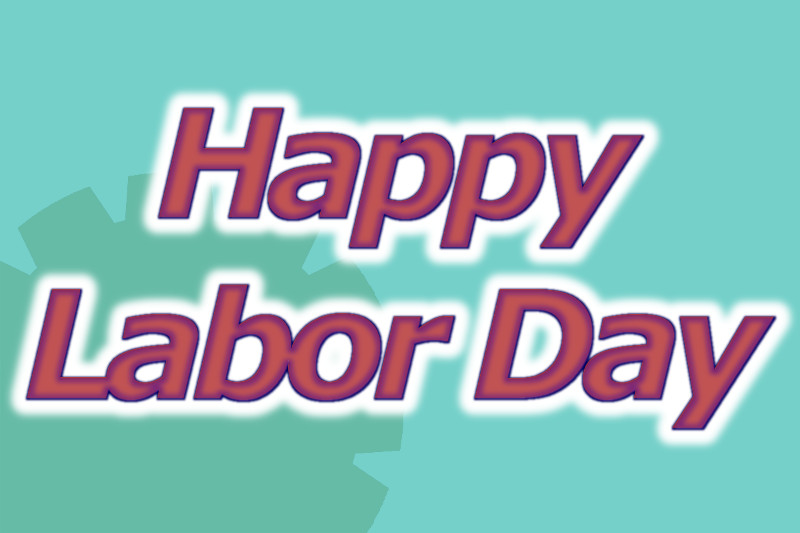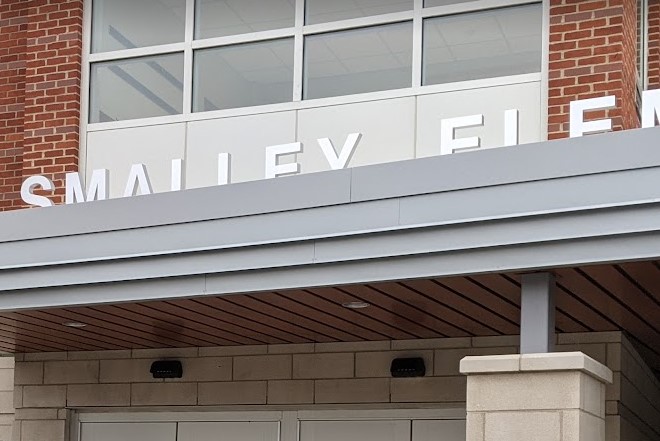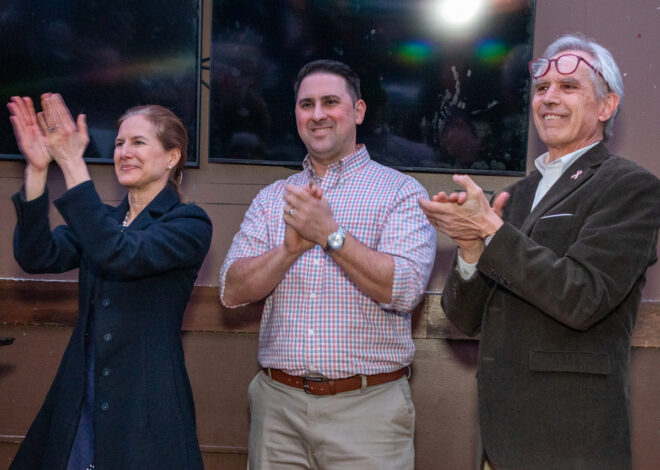1991 Saturday Night Club Paper Recounts City’s Labor Movement Past
By John McNamara
Labor Day is not a time to be nostalgic about the struggles of the last century to organize factory floors that turned New Britain into a “union town” with its many thousands of factory jobs, most of which have been long lost to offshoring and globalization.
On Labor Day 2023 the union movement will be grateful for President Biden’s affirmation of the right to organize despite Congressional gridlock over raising the federal minimum wage and strengthening labor law to level the playing field.
The percentage of the U.S. workforce in a union dipped again in 2022 to 10.1 percent, according to the Bureau of Labor Statistics, despite a resurgence of organizing and polls showing a 57-year high in public support for unions. Right-to-work laws, anti-labor legislation, a Supreme Court majority hostile to working people and the gig/remote work economy are obstacles to collective bargaining and organizing white- and blue-collar workplaces in 2023.
It’s not nostalgia, however, to make labor history a prominent part of what a new generation should know about New Britain’s past and what grandparents and great grandparents did and fought for to make decent livings and attain income security. Connecticut public schools got some encouragement to study the union movement when a 2015 Connecticut law was enacted to make labor history a part of what school districts should consider in setting social studies and history curriculums.
“We owe it to the children of Connecticut to teach them about these extraordinary contributions so that they might have an understanding of this critical component in American history,” said State Senate President Martin Looney (D-New Haven) when the law was adopted.
It’s the kind of curriculum also known as “place-based history” that is needed in the city for school kids to appreciate where they live. For New Britain, labor history is one of the biggest parts of local history.
“The Excitement Of The Times”
Attorney Bill Weber, Of Counsel and a founder of the Weber, Carrier, Boicyzk and Chace law firm, wrote a labor history paper over 30 years ago that would be a worthy assignment for reading and discussion in a New Britain High School history classroom today.
A brief history of unions, Weber’s observations trace the city’s labor movement back to the 19th century and on to the build up, strikes and redbaiting attacks on those unions and the people who made it happen.
The New Britain Saturday Night Club, founded in the 19th century, is an organization of professionals, industrialists, educators and the civic-minded whose members regularly gathered for some home-grown culture and education. None other than the “Learned Blacksmith” Elihu Burritt was a member starting in 1875 . The longstanding group is kind of a Rotary Club gathering regularly for social and intellectual discourse. The Club is reportedly still going and members meet half a dozen times a year to continue the tradition. The Community Foundation of Greater New Britain maintains a New Britain Saturday Night Club Fund “to support a legacy for culture, education and economic development” and awarded a small grant to a New Britain nonprofit last year from the donor-advised fund.
Attorney Bill Weber’s Saturday Night discourse, “The Excitement of The Times” back in 1991 barely scratches the surface of this epic time in labor history. But Weber knowledgeably recounts who some of the key players were — a “greatest generation” of New Britain union organizers mainly from the militant and trailblazing United Electrical & Radio Machine Workers (UE) who shop by shop fought resisting employers and turned the city into a “union town.”
The build up of New Britain’s labor movement and the start of industrial unions goes back to FDR’s New Deal. The UE, the United Auto Workers (UAW) of the Congress of Industrial Organizations (CIO) and the International Association of Machinists (IAM) of the old guard American Federation of Labor would at their post World War II peak represent many thousands of workers in the shops of Landers, Frary & Clark, Stanley Works, American Hardware’s Russell & Erwin, Corbin Screw, P & F Corbin and Corbin Lock divisions and Fafnir Bearing.
Attorney Weber went further back to the 19th century when the Saturday Night Club was just getting started to trace the city labor movement’s beginnings.
Two dueling preachers, engaging in some class warfare from the pulpits, may have fueled the struggle for good wages and working conditions in the 19th century. Weber recalled a chat with the Rev. Jim Simpson, a former pastor of First Church, who speculated “the beginnings of labor unrest and organization in New Britain hark back to the split of the South Church from the First Church. He suggested that the sermons of the Reverend Smalley were often directed at the industrialists of that time for their treatment of their workers and the conditions in their factories. Smalley’s efforts on behalf of the workers together with his opposition to slavery precipitated the industrialists leaving the First Church to form their own Church, today’s South Church.” A case of class warfare in the pews.
Attorney Weber’s brief history noted the formation of The Molders Union in 1860 and following the Civil War the “10 Hour League” as tradesmen won a shorter work day at Russell & Erwin. “As the manufacturers moved from skilled labor to mass production with semi-skilled and unskilled labor, the labor movement gradually died out and the Molders Union disbanded.” Not until 1915 did “low wages” and “long hours” spur the IAM into action and the drive for unions was on again only to be slowed by “red raids” by state police arresting organizers from the “Communist Labor Party” in a first wave of redbaiting that would ultimately damage and divide organized labor.
“Everything changed with the Depression,” observed Weber of the watershed year 1932. ” Healthy young men who wanted to work could find no work. One person explained that he was at the top of his class at New Britain High School and believed himself to be far brighter than those of his classmates whose families could afford to send their children to college. But for him there was neither college nor a job. With the election of Franklin Roosevelt and with the advent of the New Deal, the passage in 1933 of the National Industrial Recovery Act (or NIRA) and the passage in 1935 of the Wagner Act, the strength of law backed a worker’s efforts to organize a labor union. “Many of the individuals that I interviewed and who were involved in the early labor movement in New Britain, stated that (and I quote them) “the excitement of the times in Washington was felt in New Britain,” according to Weber.
In 1934, federal law protecting the right to organize, the first industrial union of the Depression formed at Landers, Frary & Clark. Collective bargaining began for semi-skilled and unskilled workers as the Congress of Industrial Organizations (CIO) took off in many factory towns. That “Landers Independent Union” would go on to affiliate with the UE and Local 207 was born in 1936. Recounted Weber: “This marked the beginning of an effort to organize all of the industries in New Britain. It is interesting that this drive was carried out by New Britain’s own home-grown cadre of organizers most of whom were under 25 years of age and many of whom were members of the Communist party.”
Early on, the chief organizer for the UE in New Britain was Mike Petanovich who faced beatings from company “goons” and went on to fight in WWII never to return to the labor movement after the war. Others — familiar to many retirees — followed including Nick Tomasetti who would go on to be elected to the Legislature Other UE organizers noted by Weber included Joseph Salwocki, James Wilson, Dan Dragone, Ira Shyer, Robert Barrows and Laddie Michalowski.
“The local UE leadership developed a plan to start organizing all of New Britain’s industries on a factory by factory basis. It was decided to organize the factories out of the Landers local including the remaining divisions of Landers. The organizers went to the various industrial plants in New Britain and handed out leaflets calling for workers to attend a meeting. Six to twenty people showed up from most plants with the exception of Stanley and New Britain Machine. Stanley and New Britain Machine were particularly difficult for the leadership to get workers to become involved in organization efforts because Stanley and New Britain Machine were friendly with their workers and had better working conditions than the other employers.”
The UE’s organizing drive continued to be stymied at Stanley and eventually the American Federation of Labor’s IAM led by Jack Aguzzi won the first contracts at Stanley that remains a global hardware brand where just about every product line is manufactured somewhere else. “Organizing efforts at Stanley were not successful until May, 1945 when the International Association of Machinists was recognized as the employee bargaining unit” and Frank Rocco became “the youngest elected president of an IAM local” after his military service in the war.
The other CIO union, the United Auto Workers, broke through in 1943 with a bargaining unit at Fafnir Bearing Company. The UAW’s Tony Bracha credited Marty Greenberg as one of the organizers who organized workers forcing Fafnir to finally recognize the union.
Just as federal labor law during the New Deal empowered the UE to organize the factories, the post-war Taft Hartley provisions of the Wagner Act and the travesty of red baiting took out the UE as the union for most of the city’s industrial workers. The union that turned New Britain and other towns in New England into “union towns” gave way to the UAW and IAM, both of which maintained a strong and militant labor movement for better wages and working conditions in the post-war era.
By 1991 when Attorney Weber gave his Saturday Night Club talk he noted the toll taken by industries going global for cheaper labor and offshore plants saying the city “has become a town of union retirees.”
But unions and the labor movement still figure prominently in the life of the city not only among retirees, but among the thousands of residents who still belong to a union and appreciate how important organized labor is to the city’s heritage.
(Editor’s note: A version of this post was published on Labor Day 2015 in NBPoliticus. Thanks to Attorney Weber for sharing his paper.)
New Britain Progressive, a publication of New Britain Independent Newspaper, Inc. is free to read and community supported. http://newbritainprogressive.com Please feel free to help the New Britain Progressive with a donation and you are invited to purchase advertisements in the New Britain Progressive.





